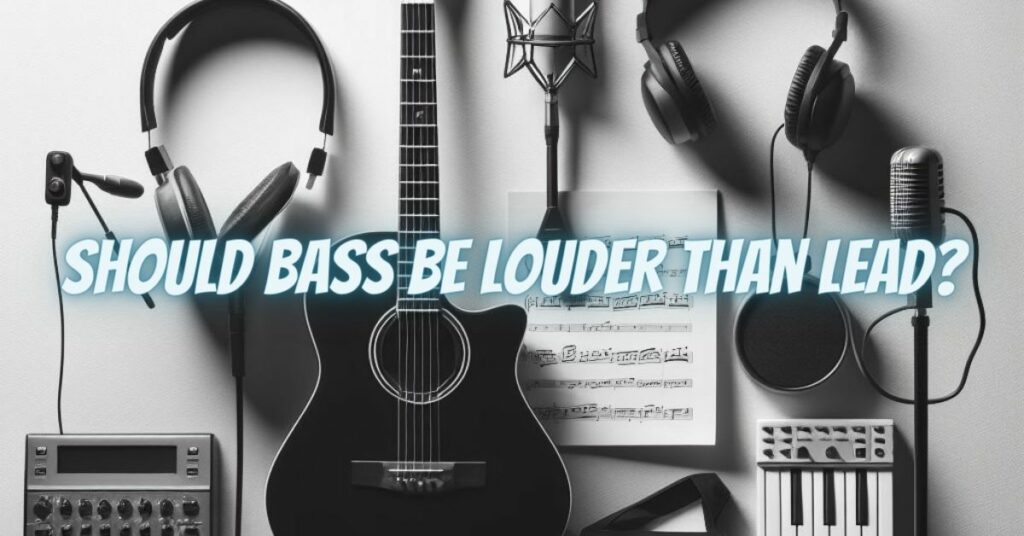Whether or not the bass should be louder than the lead guitar is a matter of opinion, and there is no right or wrong answer. It depends on the genre of music you are playing, the overall sound you are trying to achieve, and your personal preferences.
In some genres of music, such as rock and metal, the bass is often louder than the lead guitar. This is because the bass provides the foundation of the song and helps to drive the rhythm. In other genres of music, such as pop and country, the lead guitar is often louder than the bass. This is because the lead guitar is often used to play melodies and solos, which are meant to stand out from the rest of the mix.
Ultimately, the decision of whether or not the bass should be louder than the lead guitar is up to the individual musician or producer. There is no right or wrong answer, and it is important to experiment with different levels to find what sounds best for your music.
Here are some factors to consider when deciding whether or not the bass should be louder than the lead guitar:
- Genre of music: The genre of music you are playing will have a big impact on how you balance the bass and lead guitar. In some genres of music, such as rock and metal, the bass is often louder than the lead guitar. In other genres of music, such as pop and country, the lead guitar is often louder than the bass.
- Overall sound: The overall sound you are trying to achieve is another important factor to consider. If you are going for a heavy and powerful sound, then you may want to have the bass louder than the lead guitar. If you are going for a more mellow and relaxed sound, then you may want to have the lead guitar louder than the bass.
- Personal preferences: Ultimately, the decision of whether or not the bass should be louder than the lead guitar is a matter of personal preference. Some musicians prefer to have the bass louder, while others prefer to have the lead guitar louder. It is important to experiment with different levels to find what sounds best to you.
Here are some tips for balancing the bass and lead guitar:
- Start by setting the bass and lead guitar at the same level. From there, you can adjust the levels up or down to taste.
- Pay attention to the frequency range of the bass and lead guitar. The bass typically occupies the lower frequencies, while the lead guitar typically occupies the higher frequencies. To avoid conflict, try to avoid having the bass and lead guitar playing the same notes in the same frequency range.
- Use panning to help separate the bass and lead guitar. Panning is a technique that places the sound of an instrument in the left, right, or center of the stereo field. Panning the bass to one side and the lead guitar to the other side can help to separate the two instruments and make them sound more distinct.
- Use EQ to shape the sound of the bass and lead guitar. EQ is a technique that allows you to boost or cut specific frequencies. You can use EQ to shape the sound of the bass and lead guitar so that they complement each other well.
By following these tips, you can learn to balance the bass and lead guitar in a way that sounds good to you and your audience.


